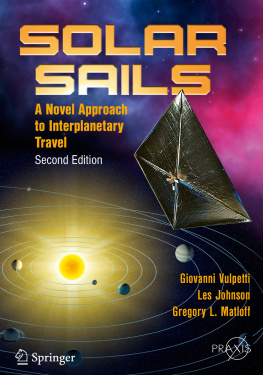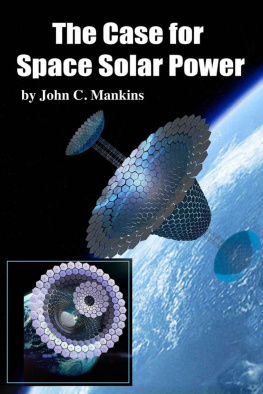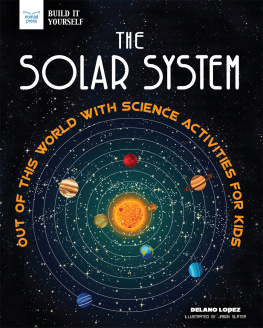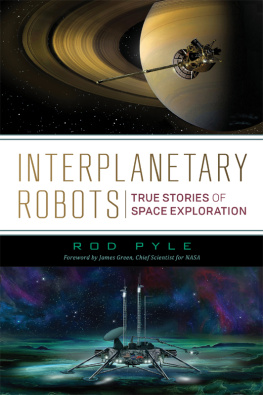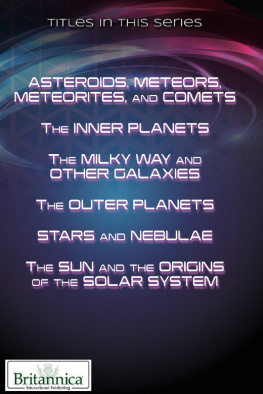1. An Historical Introduction to Space Propulsion
Well never know when the dream of spaceflight first appeared in human consciousness, or to whom it first appeared. Perhaps it was in the sunbaked plains of Africa or on a high mountain pass in alpine Europe. One of our nameless ancestors looked up at the night sky and wondered at the moving lights in the heavens.
Was the Moon another world similar to Earth? And what were those bright lightsthe ones we call planetsthat constantly change position against the background of distant stellar luminaries? Were they gods and goddesses, as suggested by the astrologers, or were they sisters to our Earth?
And if they were other worlds, could we perhaps emulate the birds, fly up to the deep heavens and visit them? Perhaps it was during a star-strewn, Moon-illuminated night by the banks of the river Nile or on the shores of the Mediterranean, as early sailing craft began to prepare for the morning trip upriver or the more hazardous sea voyage to the Cycladic Isles, that an imaginative soul, watching the pre-dawn preparations of the sailors, illuminated by those strange celestial beacons, might have wondered: If we can conquer the river and sea with our nautical technology, can we reach further? Can we visit the Moon? Can we view a planet close up?
It would be millennia before these dreams would be fulfilled. But they soon permeated the world of myth.
A Bronze Age Astronaut
These early ponderings entered human mythology and legend. According to one Bronze Age tale, there was a brilliant engineer and architect named Daedalus who lived on the island of Crete about 4,000 years ago. For some offense, he and his son, Icarus, were imprisoned in a tower in Knossos, which was at that time the major city in Crete.
Being fed a diet of geese and illuminating their quarters with candles, Daedalus and Icarus accumulated a large supply of feathers and wax. Being a brilliant inventor, Daedalus fashioned two primitive hang gliders. Wings could be flapped so that the father and son could control their craft in flight.
Its not clear what their destination would be. One version of the story has the team attempting the long haul to Sicily. Another has them crossing the more reasonable 100-km distance to the volcanic island of Santorini. Its interesting to note that a human-powered aircraft successfully completed the hop between Crete and Santorini only a few years ago, thereby emulating a mythological air voyage of the distant past.
Daedalus, being more mature, was cautious and content to be the first aviator. The youthful, headstrong Icarus was somewhat more ambitious. Desiring to become the first astronaut, he ignored his fathers pleas and climbed higher and higher in the Mediterranean sky. Unlike modern people, the Bronze Age Minoans had no concept of the limits of the atmosphere and the vastness of space. Icarus therefore flapped his wings, climbed higher, and finally approached the Sun. The Suns heat melted the wax; the wings came apart. Icarus plunged to his death as his father watched in horror.
A few thousand years passed before the next fictional physical space flight was attempted. But during this time frame, several Hindu Yogi are reputed to have traveled in space by methods of astral projection.
Early Science Fiction; The First Rocket Scientist
Starting with Pythagoras in the sixth century b.c ., classical scholars began the arduous task of charting the motions of the Moon and planets, and constructing the first crude mathematical models of the cosmos. But they still had no idea that Earths atmosphere did not pervade the universe. In what might be the first science fiction novel, creatively entitled True History , the second-century a.d . author Lucian of Samosata imagined an enormous waterspout carrying himself, inside the belly of a whale, up to the Moon. Other authors assumed that flocks of migratory geese (this time with all their feathers firmly attached) could be induced to carry fictional heroes to the celestial realm.
What is very interesting is that all of these classical authors chose to ignore an experiment taking place during the late pre-Christian era that would pave the way to eventual cosmic travel. Hero of Alexandria, in about 50 b.c. , constructed a device he called an aeolipile. Water from a boiler was allowed to vent from pipes in a suspended sphere. The hot vented steam caused the sphere to spin, in a manner not unlike a rotary lawn sprinkler. Hero did not realize what his toy would lead to, nor did the early science fiction authors. Heros aeolipile is the ancestor of the rocket.
Although Westerners ignored rocket technology for more than 1,000 years, this was not true in the East. As early as 900 a.d. , crude sky rockets were in use in China, both as weapons of war and fireworks.
Perhaps He Wanted to Meet the Man in the Moon
Icarus may have been the first mythological astronaut, but the first legendary rocketeer was a Chinese Mandarin named Wan Hu. Around 1000 a.d. , this wealthy man began to become world-weary. He asked his loyal retainers to carry him, on his throne, to a hillside where he could watch the rising Moon. After positioning their master facing the direction of moonrise, the loyal servants attached kites and strings of their most powerful gunpowder-filled skyrockets to their masters throne.
As the Moon rose, Wan Hu gave the command. His retainers lit the fuse. They then ran for cover. Wan Hu disappeared in a titanic explosion. More than likely, his spaceflight was an elaborate and dramatic suicide. But who knows? Perhaps Wan Hu (or his fragments) did reach the upper atmosphere.
In the thirteenth century a.d. , the Italian merchant-adventurer Marco Polo visited China. In addition to samples of pasta, the concept of the rocket returned west with him.
In post-Renaissance Europe, the imported rocket was applied as a weapon of war. It was not a very accurate weapon because the warriors did not know how to control its direction of flight. But the explosions of even misfiring rockets were terrifying to friend and foe alike.
By the nineteenth century, Britains Royal Navy had a squadron of warships equipped with rocket artillery. One of these so-called rocket ships bombarded Americas Fort McHenry during the War of 1812. Although the fort successfully resisted, the bombardment was immortalized as the rockets red glare in the American national anthem, The Star Spangled Banner.
The nineteenth century saw the first famous science fiction novels. French writer Jules Gabriel Verne wrote From the Earth to the Moon (1865), Twenty Thousand Leagues Under the Sea (1869), Around the Moon (1870), and Around the World in Eighty Days (1873). Particularly intriguing concepts can be found especially in the latter two books. In Around the Moon , Captain Nemo discovers and manages a mysterious (nonchemical) energy, which all activities and motion of Nautilus depend on. In Around the World in Eighty Days , Phileas Fogg commands the crew to use his boat structure materials (mainly wood and cloth) to fuel the boat steam boiler and continue toward England. A rocket ship that (apart from its propellant) burns its useless materials progressively is an advanced concept indeed! Jules Verne is still reputed to be one of the first great originators of the science fiction genre.

